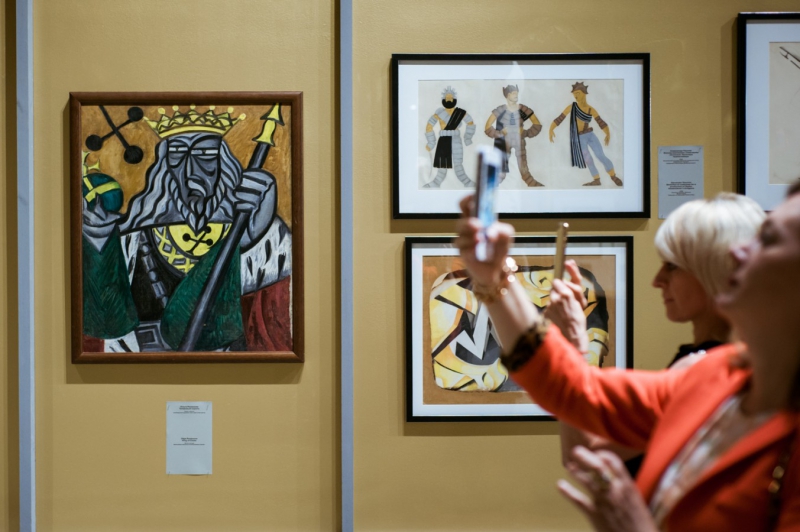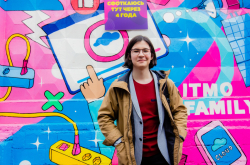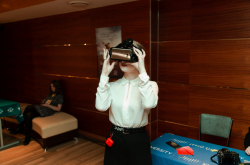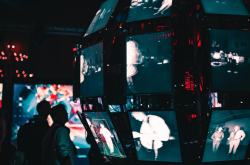Your short film has recently won a contest by the Central Naval Museum. What was it about, and why did you decide to participate?
At ITMO University, I study the field of multimedia. The “Multimedia in a Museum” festival was held as part of the “Road of Life 2019” project organized by the Central Naval Museum, namely its “Road of Life” museum branch, St. Petersburg State Museum of Film and Television and St. Petersburg State University of Culture and Arts. Students from different universities got the opportunity to present their projects and participate in the contest that was timed to coincide with the Victory Day; its main theme was the Siege of Leningrad. The organizers accepted various projects: fictional and non-fiction films, motion graphics, infographics, etc. I decided to shoot a non-fiction film.
I learned about the contest from my lecturers Aleksander Mezhenin and Dmitry Burlov. It was they who adviced me to participate. I liked the idea, because at ITMO I study the ways of popularizing art by means of multimedia technologies. Sure enough, the Siege of Leningrad is not an arts topic, but it’s about history and cultural memory that is now being reflected in art. I am interested in such things, so I decided to give it a go.
What is your project’s idea?
We based it on a poem by Andrey Gurkov that was written in the name of Tanya Savicheva. The poem epitomizes how hard life in besieged Leningrad was, and what people were dying for. We used old photographs from the times of the siege and combined them with images of the same places from our time. We showed how the view changed and used the poem as accompaniment.
I did all the technical aspects by myself: shot the video, chose the camera angles and did the editing. We studied it as part of our program, but this was my first work to ever be presented to the public.
You study the issue of popularizing art by means of multimedia technologies. Was your research directly related to this topic?
Yes, I focus on the popularization of art, namely the avant-garde painting, by means of multimedia technologies. My research advisor is Vladimir Lokalov, a PhD in Pedagogy, and every of his Master’s students works with perception psychology in one way or another. We picked narrow topics, and I studied how people perceive avant-garde painting, and tried to understand why it is so hard to perceive and how multimedia technologies can help communicate the authors’ ideas.
There are now many art-related multimedia projects on the market, but most of them have to do with entertainment, like Van Gogh's paintings "brought to life". That exhibition was organized in such a way that the viewer entered a vast space and saw paintings where particular elements moved. Such movement is chaotic and doesn’t communicate the idea of the paintings. My work, however, is aimed at searching for a way to give viewers an insight into the semantic content of an art piece.
There’s also another example of presenting paintings where elements are emphasized by means of multimedia. The organizers of Erarta’s Art-animation project proposed various media studios to give insight into the subject of the paintings exhibited at the museum by using new technologies. Their work was very interesting indeed, but had nothing to do with the authors’ ideas. Those were random variations by people who didn’t have any relation to art and tried to use animation to depict the subject of the paintings but not their essence. By the way, it was after that exhibition that I got interested in working in this field.
Tell us about your research.
At first, I worked with Leonid Grolman, a contemporary avant-garde artist; we did a long interview about his outlook and painting style, and then I did a big poll among regular people using it as a basis. The sampling was quite big: we polled people from the age of 20 to 70. I tried to learn how people perceive paintings, which elements they notice and which not. Thanks to this research, we identified the key problems that regular people face when perceiving avant-garde painting. Then, we did a short video based on Leonid’s paintings that explained their general idea. I showed it to the people I polled and got great feedback, they discovered new ideas that they failed to notice when they looked at the paintings for the first time.
Why is it hard for people to perceive the ideas of such paintings? What did you learn?
People miss the key elements, they focus on a couple of ones or fail to notice any of them, all they see is geometrical shapes but not the author’s idea. For this reason, they lose their interest, the mechanisms of perception fail to work, and a person leaves disappointed. Our task was to think of a way to develop multimedia content that could be used on the internet, for instance, as a preview that would explain the author’s message. For example, we choose several paintings and organize them in one narrative (as every author tells a common idea in a multitude of works, or their works complement each other).
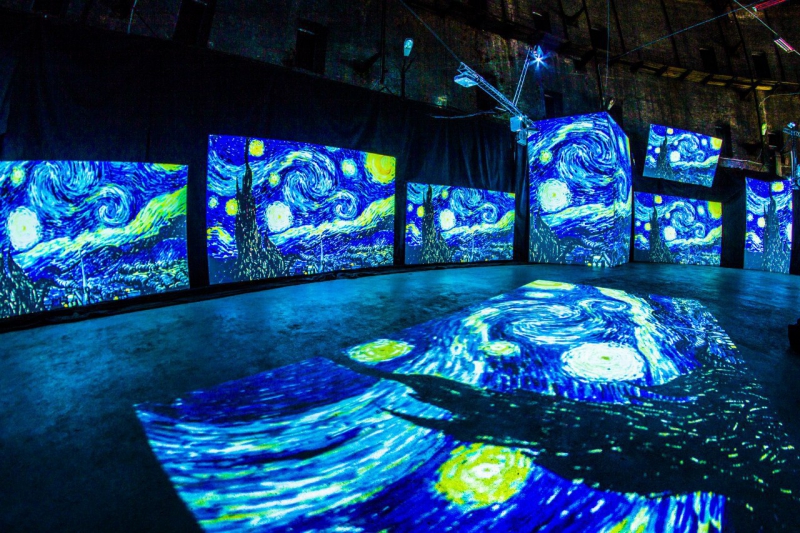
The video has to be short so that people won’t turn it off after the first several seconds. When watching the video, a person notices the key elements emphasized with special movement or scaling, and perceives their interaction: the complex metaphorical interrelations that have been created by the author. In essence, we use animation and additional audio effects to stress it. So, if a person has seen the video, comprehending the artistic work becomes easier, and they like it better. Hence, there’s a better chance that they will come to the exhibition, and what they’ve remembered from the video can help them to perceive the paintings better.
What were the results?
We believe that we’ve developed the principles of popularization by means of creating a media product. The hypothesis of my thesis was that a multimedia product that was developed according to these principles would contribute to the comprehension of an author’s idea and get the viewers interested. In order to prove that, I created an animated video based on the paintings of another artist, Leonid Vasilyev, who also works at ITMO University. After that, we did a poll: to one group, we showed the paintings only, and to the other, we also showed the video right before they saw the artist’s works. Then, we asked them to describe how they perceived the ideas of these images, as well as explain their interest in this particular artist’s work. The results and their test of statistical significance showed that my hypothesis is correct.
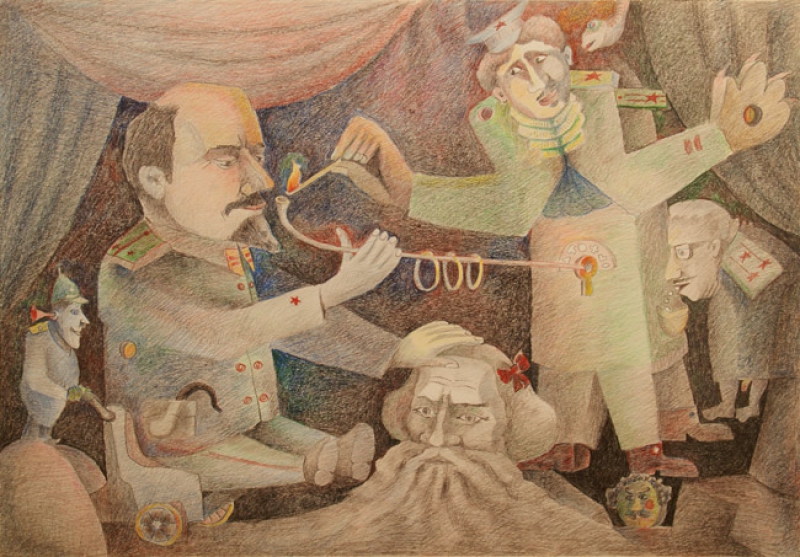
So what’s the recipe for a successful media product?
A developer of multimedia content has to not only be a professional in their field and have the associated technical skills but also be keen on the author’s semantic style. I worked with contemporary artists so we could learn their perception of their work. In the case of authors who are already dead, you can base your research on their notes, as well as works of their biographers and art experts. One of the principles that we’ve identified is the importance of studying the motive for creating a particular piece of art, its main idea. Else, you’ll be getting entertainment content that fails to activate the mechanisms of perception. Another important thing is choosing the right art pieces to base multimedia product on.
Apart from participating in creativity competitions, you also take part in organizing the St. Petersburg International Cultural Forum. Tell us about this experience.
The St. Petersburg International Cultural Forum has been taking place for eight years in a row. It is organized by the Government of the Russian Federation, the Ministry of Culture, the Government of St. Petersburg and the Russian Foundation for Culture. The forum involves all aspects of arts: theatre, painting, music, cinematography, and others. This is a major international event that is attended by the president, and the list of VIP guests includes up to 400 people. The forum has five key sites and over a hundred local ones.
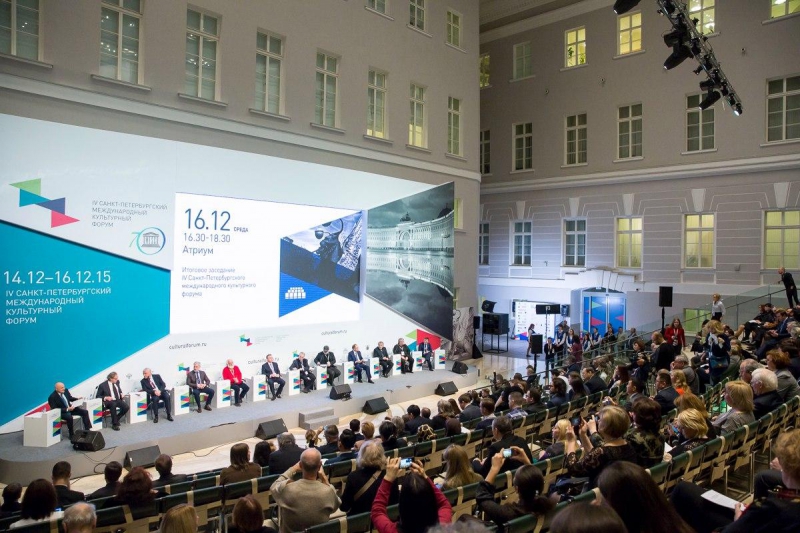
I am glad to have participated in the organization of this project for the last two years. I organize the transfer of the forum’s VIP guests. Among them are many renowned people like director Fyodor Bondarchuk, piano player Denis Matsuev, actor Sergey Bezrukov, artistic director of a Moscow jazz orchestra Igor Butman and many more. So, the forum brings together leading specialists, and not just Russian ones: representatives of many countries come to the event. Every year, the organizers choose one or two countries that become the forum’s main guests, for example, it was Greece in 2016, Japan and Kazakhstan in 2017, Italy and Qatar in 2018, and this year it will be China.
How do you see your further development within the context of these fields?
I would’ve liked to continue to both organize events and create various media content. Multimedia is making its way into all fields of culture, and such events are becoming a lot more popular. I want to combine my organizational activities and my work with multimedia in the field or arts. I like that ITMO’s educational program is a mixture of technology and humanities: arts, philosophy, psychology, and combines these fields very efficiently, as such projects attract young specialists and just anyone who find it easier to immerse into the field of culture within the context of today’s reality.
